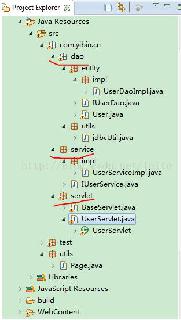使用Python實(shí)現(xiàn)批量ping操作方法
在日常的工作中,我們通常會(huì)有去探測(cè)目標(biāo)主機(jī)是否存活的應(yīng)用場(chǎng)景,單個(gè)的服務(wù)器主機(jī)可以通過(guò)計(jì)算機(jī)自帶的DOS命令來(lái)執(zhí)行,但是業(yè)務(wù)的存在往往不是單個(gè)存在的,通常都是需要去探測(cè)C段的主機(jī)(同一個(gè)網(wǎng)段下的存活主機(jī)),這樣使用DOS來(lái)進(jìn)行操作是不可取,探測(cè)的速度太慢了,不滿足實(shí)際需要。一般批量的操作需要使用腳本進(jìn)行一鍵部署執(zhí)行,本文主要通過(guò)使用Python語(yǔ)言來(lái)實(shí)現(xiàn)批量ping的操作(使用多線程實(shí)現(xiàn)Python批量處理)
Python版本 :Python3
使用的第三方庫(kù):subprocess, logging, threading, queue
日志導(dǎo)出模塊功能:
def set_logging_format(): logging.basicConfig(level=logging.INFO, format=’%(message)s’, filename=’ping_host.log’, filemode=’w’ ) console = logging.StreamHandler() console.setLevel(logging.INFO) formatter = logging.Formatter(’%(message)s’) console.setFormatter(formatter) logging.getLogger(’’).addHandler(console)多線程實(shí)現(xiàn)批量操作:threads = [] THREAD_NUM = 20 user_iput = input(’please input modren: ’) if user_iput == ’addr’: IP_L = IP_LIST if user_iput == ’file’: IP_L = IP_QUEUE for i in range (THREAD_NUM): t = threading.Thread(target = ping_IP,args = (IP_L,)) threads.append(t) for i in range (THREAD_NUM): threads[i].start() for i in range (THREAD_NUM): threads[i].join()
完整代碼部分:
import subprocessimport loggingimport datetimeimport timeimport threadingfrom queue import Queueimport sys# 實(shí)現(xiàn)日志導(dǎo)出def set_logging_format(): logging.basicConfig(level=logging.INFO, format=’%(message)s’, filename=’ping_host.log’, filemode=’w’ ) console = logging.StreamHandler() console.setLevel(logging.INFO) formatter = logging.Formatter(’%(message)s’) console.setFormatter(formatter) logging.getLogger(’’).addHandler(console)# 將需要ping 連接的IP加入隊(duì)列def insert_ip_queue(ip_list_path): IP_QUEUE = Queue() with open (ip_list_path,’r’) as f: for ip in f.readlines(): IP_QUEUE.put(ip) f.close() return IP_QUEUEdef IP_list (): ip_list = Queue() for i in range (1,255): ip = ’192.168.1.’ + str(i) ip_list.put(ip) return ip_list# print (IP_list())#print (IP_list())#定義 ping 函數(shù)def ping_IP (IP_QUEUE): while not IP_QUEUE.empty(): ip = IP_QUEUE.get().strip(’n’) #print (ip) res = subprocess.call(’ping -w 1000 -n 1 %s’ % ip , stdout=subprocess.PIPE,shell=True) #print (res) if res == 0: h =subprocess.getoutput(’ping’ + ’ ’ + ip) #print (h) if ’TTL=’ in h:res = (’網(wǎng)絡(luò)可以正常連通平均延時(shí) = %s’ % h.split(’平均 = ’)[1]) else: res = ’網(wǎng)絡(luò)連接失敗!’ today = datetime.datetime.now().strftime('%Y - %m - %d %H : %M : %S') logging.info('%s IP = %s %s' % (today,ip,res))def main (): set_logging_format() ip_list_path = ’./hostip.txt’ IP_QUEUE = insert_ip_queue(ip_list_path) IP_LIST = IP_list() threads = [] THREAD_NUM = 20 user_iput = input(’please input modren: ’) if user_iput == ’addr’: IP_L = IP_LIST if user_iput == ’file’: IP_L = IP_QUEUE for i in range (THREAD_NUM): t = threading.Thread(target = ping_IP,args = (IP_L,)) threads.append(t) for i in range (THREAD_NUM): threads[i].start() for i in range (THREAD_NUM): threads[i].join()if __name__ == ’__main__’: main()
到此這篇關(guān)于使用Python實(shí)現(xiàn)批量ping操作的文章就介紹到這了,更多相關(guān)使用Python實(shí)現(xiàn)批量ping操作內(nèi)容請(qǐng)搜索好吧啦網(wǎng)以前的文章或繼續(xù)瀏覽下面的相關(guān)文章希望大家以后多多支持好吧啦網(wǎng)!
相關(guān)文章:
1. 利用CSS3新特性創(chuàng)建透明邊框三角2. vue前端RSA加密java后端解密的方法實(shí)現(xiàn)3. JSP+Servlet實(shí)現(xiàn)文件上傳到服務(wù)器功能4. 基于jsp+mysql實(shí)現(xiàn)在線水果銷售商城系統(tǒng)5. 基于javaweb+jsp實(shí)現(xiàn)企業(yè)財(cái)務(wù)記賬管理系統(tǒng)6. CSS可以做的幾個(gè)令你嘆為觀止的實(shí)例分享7. ASP動(dòng)態(tài)網(wǎng)頁(yè)制作技術(shù)經(jīng)驗(yàn)分享8. ASP中實(shí)現(xiàn)字符部位類似.NET里String對(duì)象的PadLeft和PadRight函數(shù)9. php使用正則驗(yàn)證密碼字段的復(fù)雜強(qiáng)度原理詳細(xì)講解 原創(chuàng)10. 淺談?dòng)蓀osition屬性引申的css進(jìn)階討論

 網(wǎng)公網(wǎng)安備
網(wǎng)公網(wǎng)安備